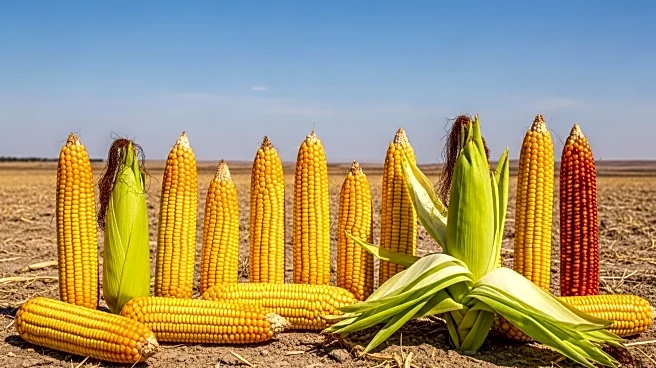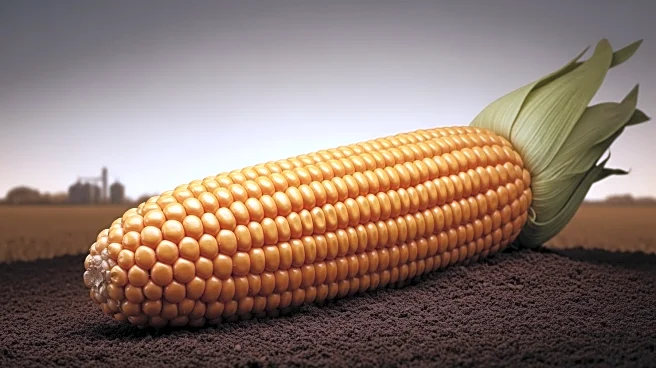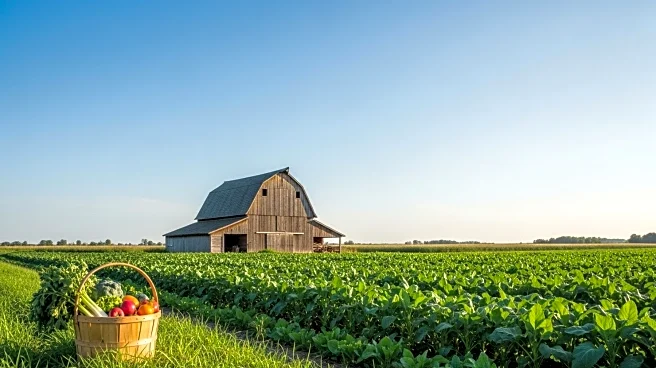What is the story about?
What's Happening?
The USDA's latest Crop Progress report highlights varying conditions in the U.S. corn harvest across different states. Wisconsin leads with 81% of its corn crop rated good/excellent, while Nebraska and Missouri follow with 77%. Despite these ratings, drought conditions have affected the harvest, with Nebraska's corn harvest at 11%, below its five-year average of 17%. Missouri, however, is ahead of its average with 40% harvested. Other states like South Dakota and Minnesota show slower progress, with only 5% of their corn harvested. The report indicates that early yields in Wisconsin are promising, ranging from 225-250 bushels per acre.
Why It's Important?
The mixed progress in corn harvests across the U.S. reflects the broader impact of drought conditions on agriculture. States like Nebraska and South Dakota are experiencing slower harvest rates, which could affect overall production and market supply. This situation underscores the importance of weather patterns in agricultural productivity and economic stability for farmers. The variability in yields also highlights the challenges farmers face in managing crops under changing environmental conditions, potentially influencing future agricultural practices and policies.
What's Next?
As the harvest continues, farmers and agricultural stakeholders will closely monitor weather conditions and crop yields. The USDA's ongoing reports will provide insights into how drought conditions are affecting different regions and may prompt discussions on adaptive strategies for future growing seasons. Additionally, the impact on corn supply could influence market prices and trade dynamics, affecting both domestic and international markets.
Beyond the Headlines
The current drought conditions and their impact on corn harvests may lead to increased interest in sustainable farming practices and technologies aimed at mitigating climate-related challenges. This could drive innovation in crop management and irrigation techniques, fostering resilience in the agricultural sector.
AI Generated Content
Do you find this article useful?















